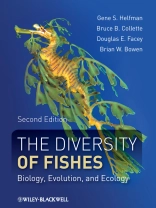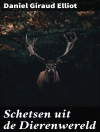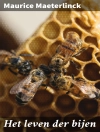The second edition of The Diversity of Fishes represents a
major revision of the world’s most widely adopted ichthyology
textbook. Expanded and updated, the second edition is illustrated
throughout with striking color photographs depicting the
spectacular evolutionary adaptations of the most ecologically and
taxonomically diverse vertebrate group. The text incorporates the
latest advances in the biology of fishes, covering taxonomy,
anatomy, physiology, biogeography, ecology, and behavior. A new
chapter on genetics and molecular ecology of fishes has been added,
and conservation is emphasized throughout. Hundreds of new and
redrawn illustrations augment readable text, and every chapter has
been revised to reflect the discoveries and greater understanding
achieved during the past decade. Written by a team of
internationally-recognized authorities, the first edition of The
Diversity of Fishes was received with enthusiasm and praise,
and incorporated into ichthyology and fish biology classes around
the globe, at both undergraduate and postgraduate levels. The
second edition is a substantial update of an already classic
reference and text.
Companion resources site
This book is accompanied by a resources site:
href=’http://www.wiley.com/go/helfman’>www.wiley.com/go/helfman
The site is being constantly updated by the author team and
provides:
· Related
videos selected by the authors
· Updates
to the book since publication
·
Instructor resources
· A chance
to send in feedback
Inhaltsverzeichnis
Preface.
Part I Introduction.
1 The science of ichthyology.
2 Systematic procedures.
Part II Form, Function, and Ontogeny.
3 Skeleton, skin, and scales.
4 Soft anatomy.
5 Oxygen, metabolism, and energetics.
6 Sensory Systems.
7 Homeostasis.
8 Functional morphology of locomotion and feeding.
9 Early life history.
10 Juveniles, adults, age, and growth.
Part III Taxonomy, Phylogeny, and Evolution.
11 A history of fishes.
12 Chondrichthyes: Sharks, skates, rays, and chimaeras.
13 Living representatives of primitive fishes.
14 Teleosts at last I: bonytongues through anglerfishes.
15 Teleosts at last II: spiny-rayed fishes.
Part IV Zoogeography, Habitats, and Adaptations.
16 Zoogeography.
17 Fish genetics.
18 Special habitats and special adaptations.
Part V Behavior and Ecology.
19 Fishes as predators.
20 Fishes as prey.
21 Fishes as social animals: reproduction.
22 Fishes as social animals: aggregation, aggression, and
cooperation.
23 Cycles of activity and behavior.
24 Individuals, populations, and assemblages.
25 Communities, ecosystems, and the functional role ofn
fishes.
Part VI The Future of Fishes.
26 Conservation.
References.
Index
Über den Autor
Gene S. Helfman is an Emeritus Professor of Ecology in the
Odum School of Ecology, University of Georgia. He retired after 30
years of conducting research on and teaching about ichthyology,
animal behavior, and conservation biology. His research focused on
the behavioral ecology and conservation of fishes in lakes,
streams, coastal oceans, and coral reefs. In addition to
contributing to this textbook, Helfman in 2007 published a highly
acclaimed reference and text, Fish Conservation: A Guide to
Understanding and Restoring Global Aquatic Biodiversity and Fishery
Resources. He received a BS from the University of California, an
MS from the University or Hawaii, and a Ph.D. from Cornell
University.
Bruce Collette is a Senior Scientist at the National
Systematics Laboratory of the National Marine Fisheries Service
based in the National Museum of Natural History, part of the
Smithsonian Institution in Washington, D.C. He studies the
systematics and evolution of several groups of epipelagic fishes
such as tunas, mackerels, halfbeaks, and needlefishes and benthic
fishes such as toadfishes and has published over 250 papers on
these and other fishes. He has co-authored books on fishes of the
Gulf of Maine and Bermuda. He received his BS and Ph D degrees at
Cornell University.
Doug Facey is a Professor of Biology at Saint Michael’s
College in Vermont where he studies the ecology and physiology of
fishes of Lake Champlain and its tributaries. One ongoing area of
interest is fish diversity in lower tributaries, including some
rare darters. Doug received his BS in Biology at the University of
Maine-Orono, his MS in Zoology at the University of Vermont, and
his Ph D in Zoology at the University of Georgia.
Brian Bowen spent the summers of his youth snorkeling in
Cape Cod Bay, where he learned to appreciate fishes. Dr Bowen is a
researcher at Hawaii Institute of Marine Biology (University of
Hawaii), with over two dozen research expeditions, and over 100
publications on the conservation genetics of fishes and other
vertebrates. He holds a M.A. degree from Virginia Institute of
Marine Science, a Ph.D. from University of Georgia, and is a fellow
of the American Association for the Advancement of Science.
Currently Dr. Bowen works on fish five days a week, and on the
weekend prefers to go fishing.












